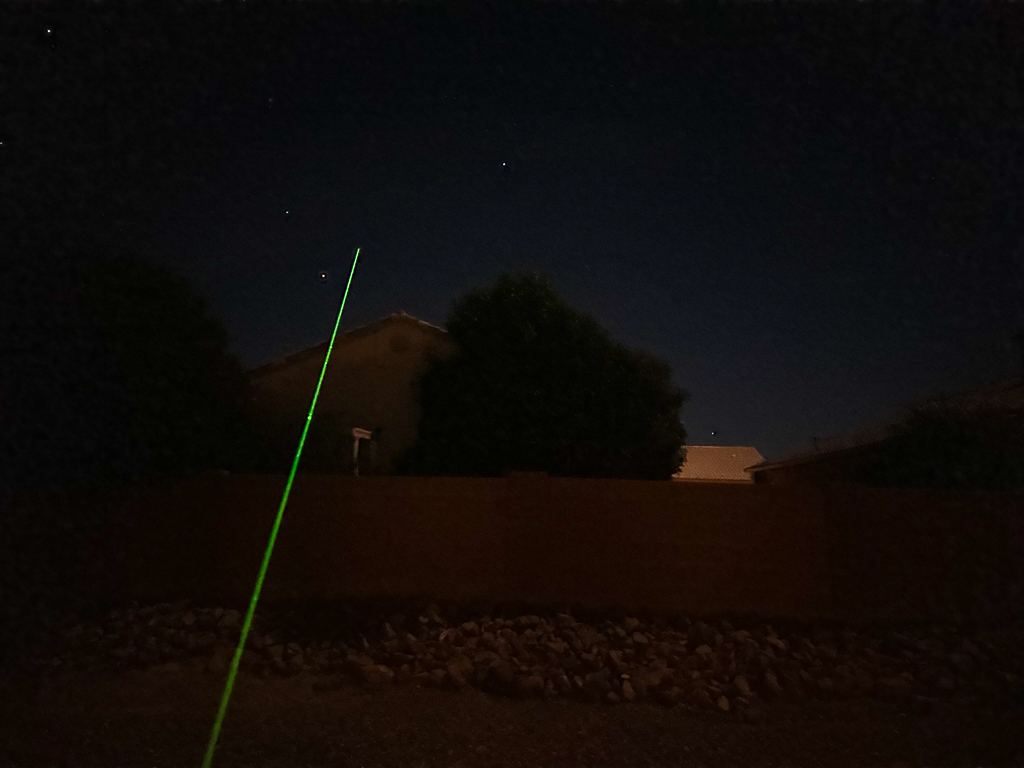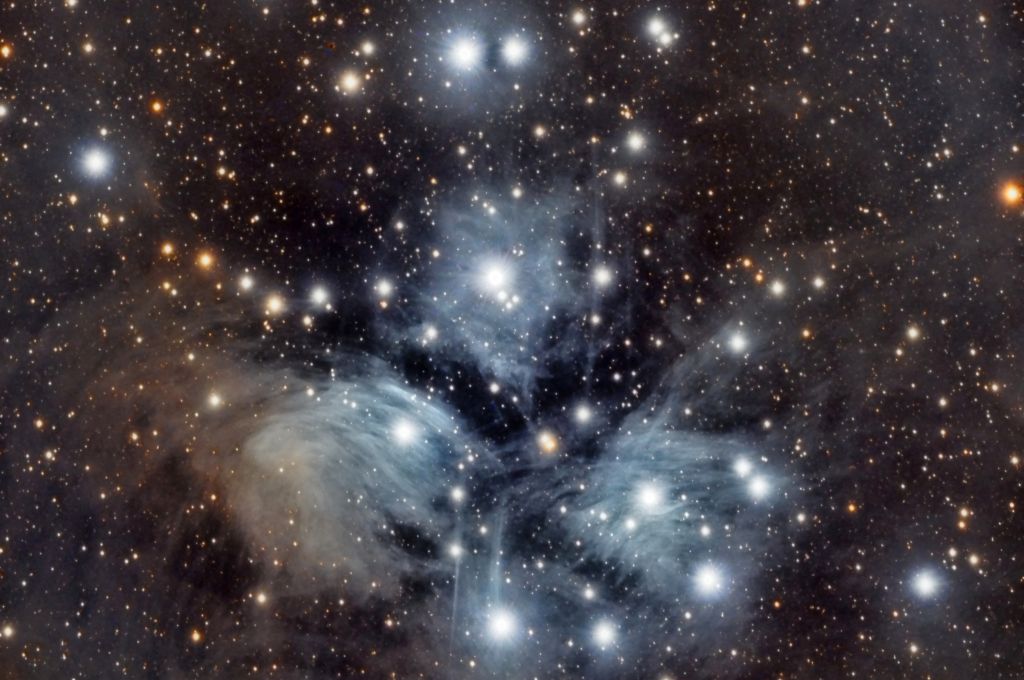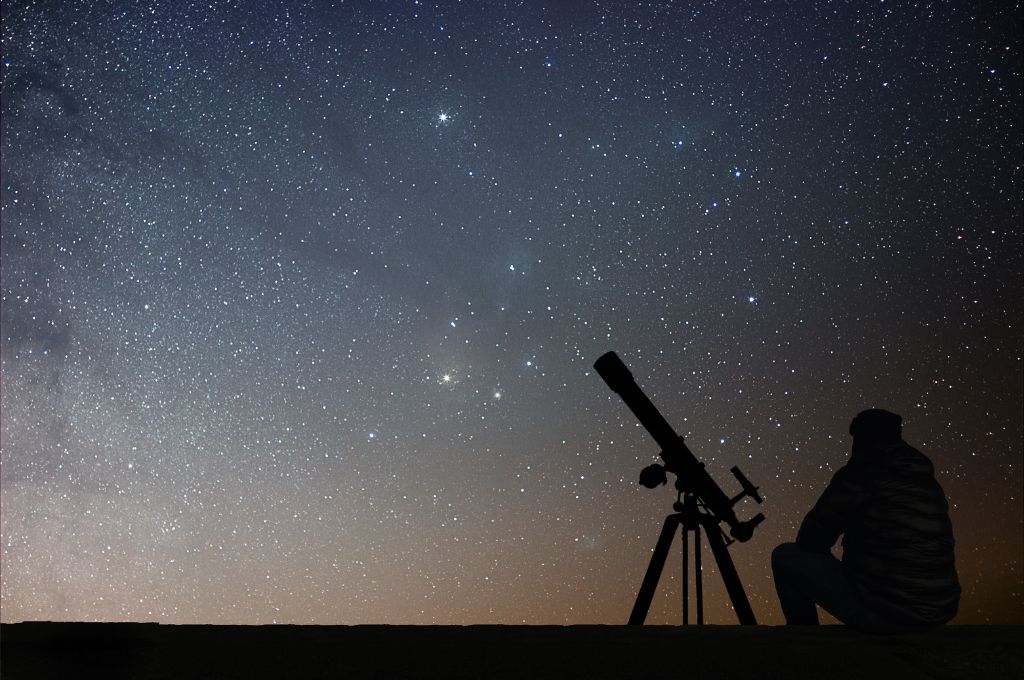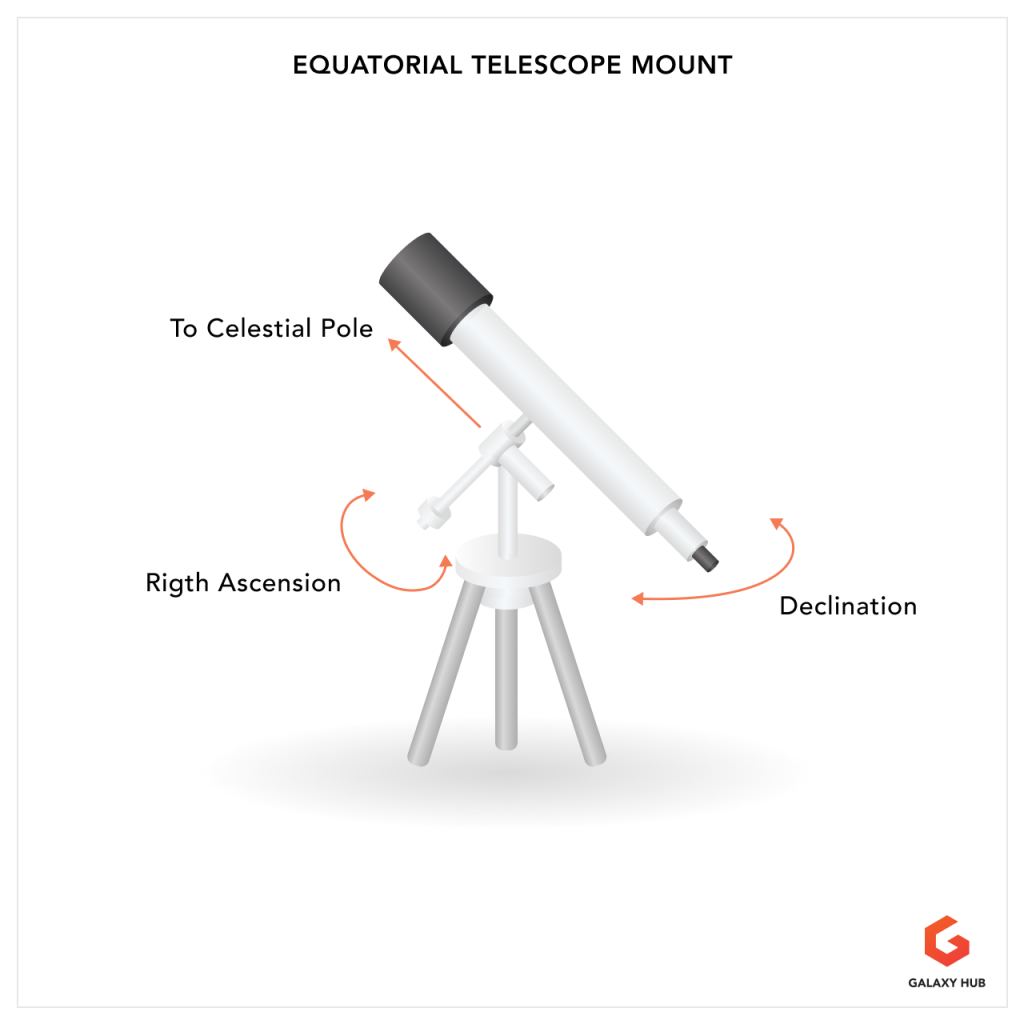Finding your way around the night sky is not always easy, especially for beginner astronomers.
One way that you can more easily navigate the night sky is by using a green astronomy laser.
But are these lasers really helpful and should you use one? Or more importantly, are these even legal!?
In this article we will cover green lasers for astronomy in detail and give you some tips and insight into using these yourself.
What is a green astronomy laser?
A green astronomy laser is just a green laser used for astronomy purposes. Some astronomers use other colors such as blue, violet, or red but green is often used because it is so easy to see.
How to choose a good green astronomy laser
I’m not an expert on the science of lasers but I can share with you my experience of using the Gainlly Long Range Green Laser Pointer with USB Charging Tactical Beam.
It only cost me about $15 and has worked very well. I certainly would not break the bank getting a green laser if I were just getting into astronomy.
However, if you wanted to go with the more reputable brand then look into Z-Bolt. These would be higher quality and also some are built to withstand more extreme temperatures.
You’ll want to stick to a laser no more powerful than 5 milliwatts (mW) because lasers greater than 5 mW power are illegal to be used as laser pointers in the United States. Make sure that the label states that the laser complies with CFR 21.
A major consideration you want to think about when purchasing a laser for astronomy is the temperature threshold. In other words, how cold can the laser be and still function?
Laser beams really struggle whenever you try to use them in cold weather. Generally, whenever you get into the low 40s that’s where you may start to notice issues.
You can take certain precautions like putting them inside of a coat pocket or in a pocket with a hand warmer — some people even create an insulating sleeve.
But you can also purchase a higher quality laser that might perform better in extreme cold and heat. Once again Z-Bolt would be a good choice.
Some of these lasers are also rechargeable so you can charge them up with a simple USB charger.
How do you use a green astronomy laser?
There are a few different ways that you can use a green astronomy laser during your astronomy sessions.
Pointing out stars for others
The primary way that I use my laser is to point out stars, planets, DSOs, and constellations when I have people over for observing sessions.
Typically, these are friends or family who are not well-versed on the night sky and it is substantially easier to point out objects in the night sky with one of these lasers versus just pointing with your finger and saying “that bright dot over there.”
The green laser beam also just looks really cool and people get a kick out of seeing a laser beam shoot out into the vastness of the night sky.
Tip: Green lasers are a great accessory to use in conjunction with a planisphere when showcasing the night sky to others.
Use as a finder scope
Some people actually use lasers in place of finder scopes, or at least in conjunction with them.
With a properly collimated laser, you can attach it to your telescope and use that to position your telescope in the proper place when trying to observe various objects.
The major advantage this has over something like a red dot finder is that it does not require you to strain your neck, back, or shoulder muscles as much.
For people that have major issues viewing through finder scopes or red dot finders, lasers can be very beneficial.
Help with binocular viewing
Another way to use a laser is to help you find objects when viewing through binoculars. I’ve found this handy when viewing with other people like my spouse.
If I’m struggling to find something when viewing through binoculars, I can remove the binoculars and use the laser to point exactly to where that object is.
Then, I will grab the binoculars and get my spouse to point the laser to that spot once again, allowing me to instantly locate the object.

Star parties and other gatherings
Anytime you decide to bring a laser to a star party or other gathering, make sure that you check to see if it will be permitted.
A green laser could be a problem at these gatherings for a couple of reasons.
Some people might complain that the laser is just a nuisance when they are trying to focus on the night sky and appreciate the beauty of a dark sky.
Related to the above point, the green laser could be so bright that it could affect the adjustment of someone’s eyes to darkness which is a huge no-no when observing with groups. (If brightness is an issue, you might look into other colors like blue or violet which can be easier on the eyes.)
And finally, a green laser could ruin an astrophotography session for someone so that’s always a major consideration to be aware of.

Legal and safety considerations
The first thing you need to think about is whether or not it is legal for you to use or even possess a laser where you reside.
Some places might completely outlaw the use of lasers or have specific limitations on the power of the laser.
So you want to make sure you are educated on the national, state, and local laws or ordinances which sometimes can be difficult to find.
Regardless of where you live, there will be some laws that apply universally.
First, never point a laser towards an aircraft, whether that be a plane or helicopter. This means that anytime you are using a laser at night you need to be diligent and scan the skies for aircraft lights. These are usually easy to spot but clouds can make it difficult to spot them coming from afar and you can’t always hear them.
If you live in an urban area or near an airport or airfield you will have increased air traffic which means you need to be extra diligent. In some cases, it may not even be worth trying to use it because of the risk.

Another thing that you cannot do is shine a laser at anyone in law enforcement.
This should not be hard for you to avoid with your typical backyard astronomy set up but it is worth being aware of for the simple reason that it could get you shot.

Another potential safety concern is that you are essentially broadcasting your location to anyone nearby.
You never know who might be interested in investigating the source of the laser. It could be a police officer or just a curious passerby.
Either way, if you choose to use a laser you should be prepared for someone to potentially approach you, including those elusive extraterrestrial beings.
The major health consideration for these lasers is to avoid shining them in someone’s eye. This includes people, pets, wildlife.
Hopefully you will have a laser that is not powerful enough to cause eye damage with a simple flash to the eye.
But regardless of the power of your laser, you should always avoid shooting it towards anyone’s face. Even if you don’t cause permanent damage, you could still cause an injury or series discomfort.
Final word
Green lasers are not for everyone but they can serve a few different purposes for astronomers. They are great for outreach events and can also be used to help people locate objects through their telescope.
But you need to be careful that you don’t harm anybody’s eyes and that you comply with local laws for using lasers.






